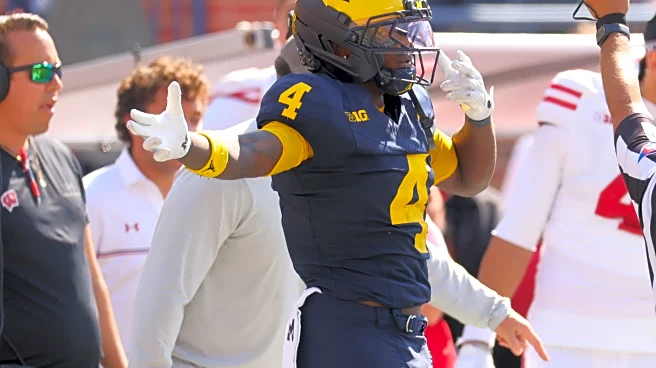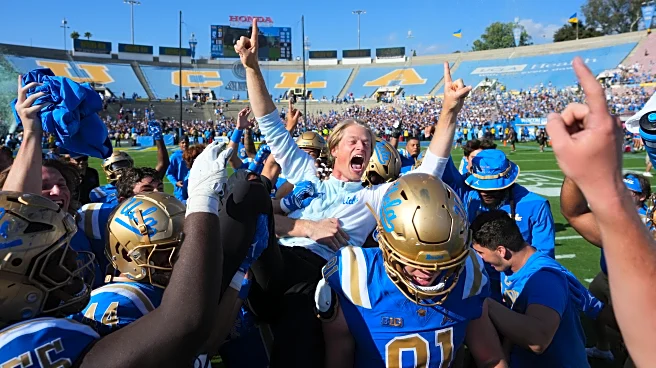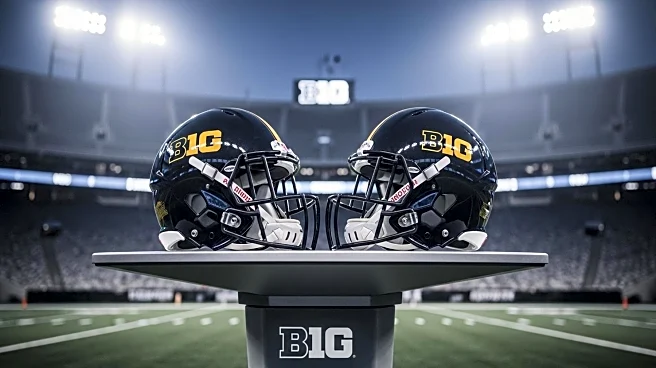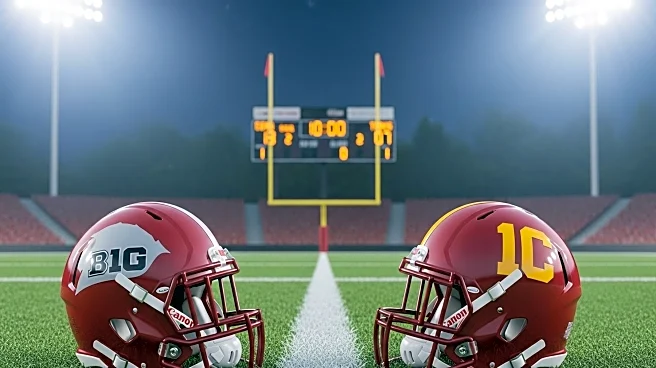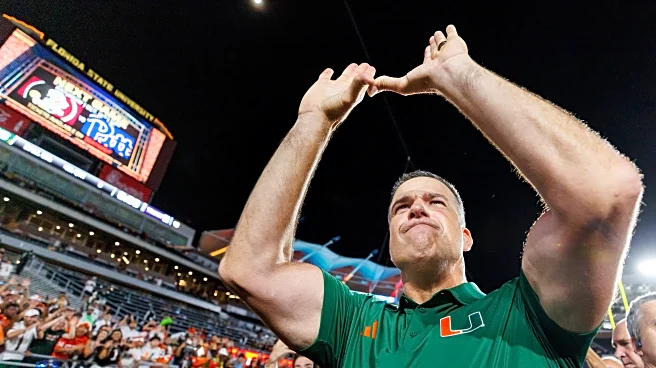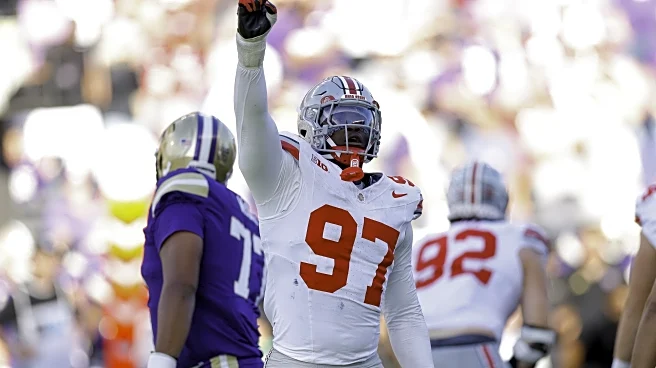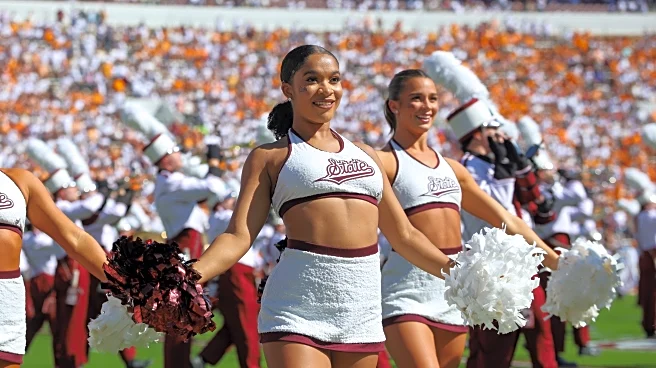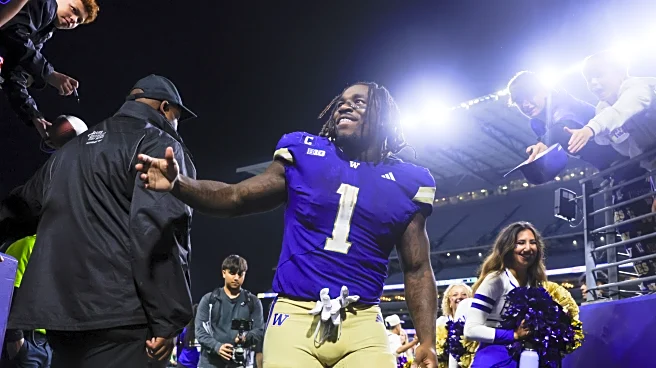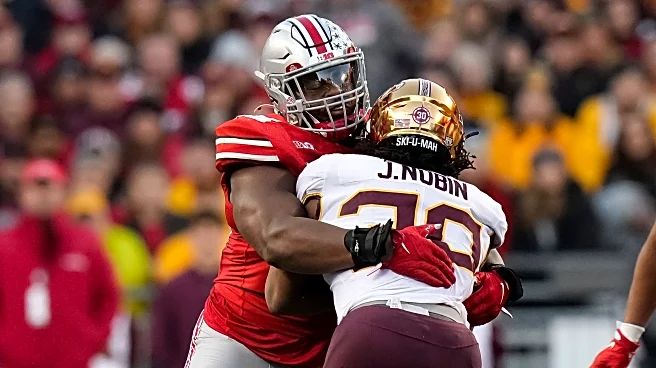What's Happening?
Ohio State University has been projected as the No. 1 team in the College Football Playoff (CFP) rankings, despite skepticism about the strength of their schedule. The Buckeyes recently secured a decisive victory over Minnesota, but critics argue that their overall performance does not justify the top ranking. The team's upcoming games include matchups against Illinois, Wisconsin, and Penn State, which are seen as critical tests before the first CFP poll is released on November 4. The debate centers on whether Ohio State's current achievements merit their position, especially when compared to other top teams like Miami and Oregon, who are also vying for playoff spots.
Why It's Important?
The ranking of Ohio State as No. 1 in the CFP projections has significant implications for college football, particularly in terms of playoff positioning and the perception of team strength. A high ranking can influence the selection committee's decisions and impact the team's chances of securing a spot in the playoffs. This situation highlights the ongoing debate about the criteria used to evaluate teams, including the importance of schedule strength and head-to-head competition. For Ohio State, maintaining their top position could enhance their visibility and attract more attention from recruits and sponsors, while other teams may feel disadvantaged by the perceived leniency in evaluating Ohio State's schedule.
What's Next?
Ohio State's upcoming games against Illinois, Wisconsin, and Penn State will be crucial in determining whether they can maintain their No. 1 ranking. These games are expected to provide a clearer picture of the team's capabilities and resilience against stronger opponents. The results will likely influence the CFP selection committee's decisions and could lead to shifts in the rankings. Additionally, other top teams like Miami and Oregon will continue to compete for higher positions, adding pressure on Ohio State to perform consistently well. The outcome of these games will be closely watched by fans, analysts, and stakeholders in the college football community.

